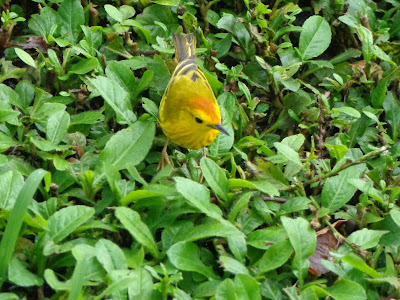Today's post is about Galapagos birds. Most of these pictures were taken in Elizabeth Bay on Isabela Island. Some were made on other islands.
We took some of our tours on water only. We were able to get up close to the shoreline in our zodiac boats.
We went in close to the Mangrove forest in Elizabeth bay. It was teaming with birds and Iguanas. We saw many sea turtles swimming under the water.
This is a Great Blue Heron.
This is a Flightless Cormorant. They only live in the Galapagos. Their wings are stubby and they swim and fish a lot like penguins.
The most popular bird of the Galapagos is the Blue Footed Boobie. They are adorable and as you can see their feet are bright blue. The brighter the blue the healthier the bird.
This is the best shot I could get of the Galapagos Penguins. It really seems odd to see penguins on the equator. Since the Galapagos Islands are located on the equator, the northern and southern currents of the Pacific ocean converge there. This is the reason that you can see Flamingos and Penguins living in the same place.
I am not positive, but I think this is a female Frigate bird.
These two birds are Lava Gulls. These gulls are endemic to the Galapagos Islands and are the rarest gulls in the world.
This cute bird is a Yellow Warbler. They live in the Galapagos and also other places in the Americas.
This is the Magnificent Frigatebird. They are also a very popular bird of the Galapagos. The male has a striking red gular sac which he inflates to attract a mate. Other than the Galapagos, these birds can be found in tropical and subtropical waters off of the Americas between Mexico and Ecuador.
This is the Swallow Tailed Gull. It's plumage and the red ring around the eye show that it is in breeding condition. Although these gulls are found elsewhere, their main breeding area is the Galapagos.
This is an American Oyster Catcher. They obviously eat other sea life because there are no oysters in the Galapagos. Besides the Galapagos they live along costs of both the Americas.
Love,
Nancy














No comments:
Post a Comment
Comments are welcome.